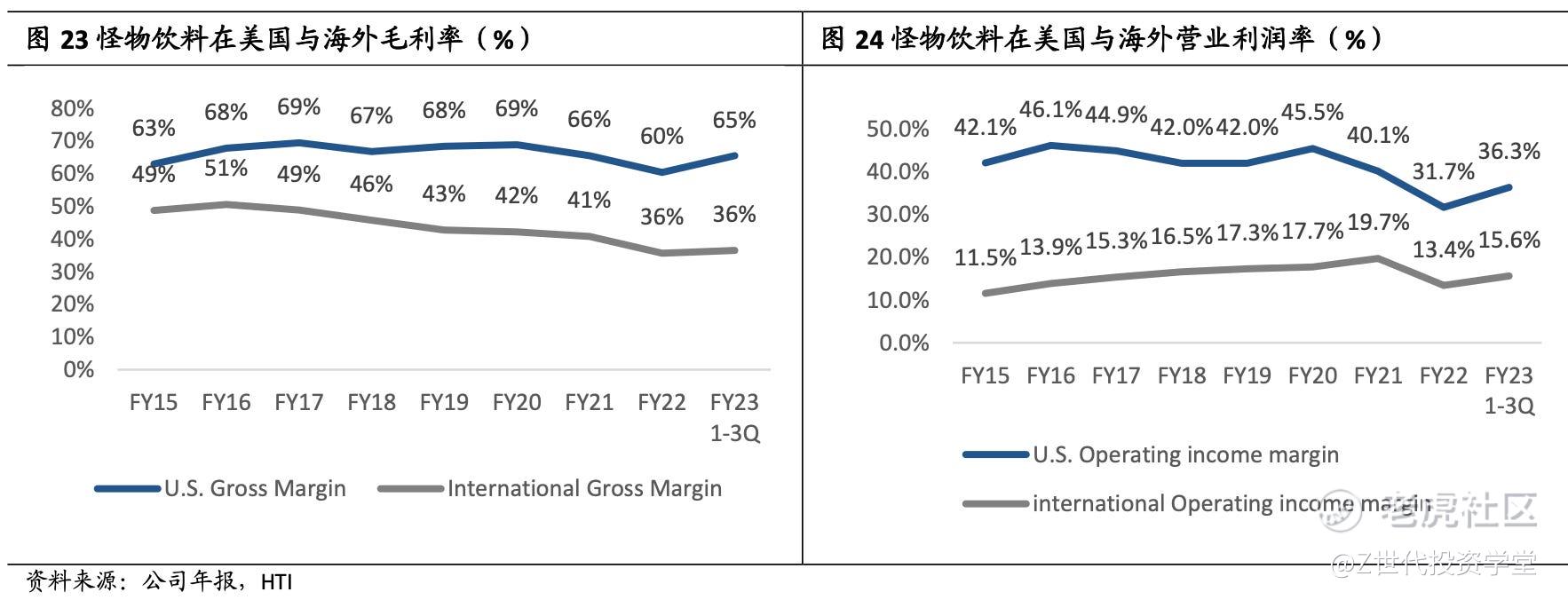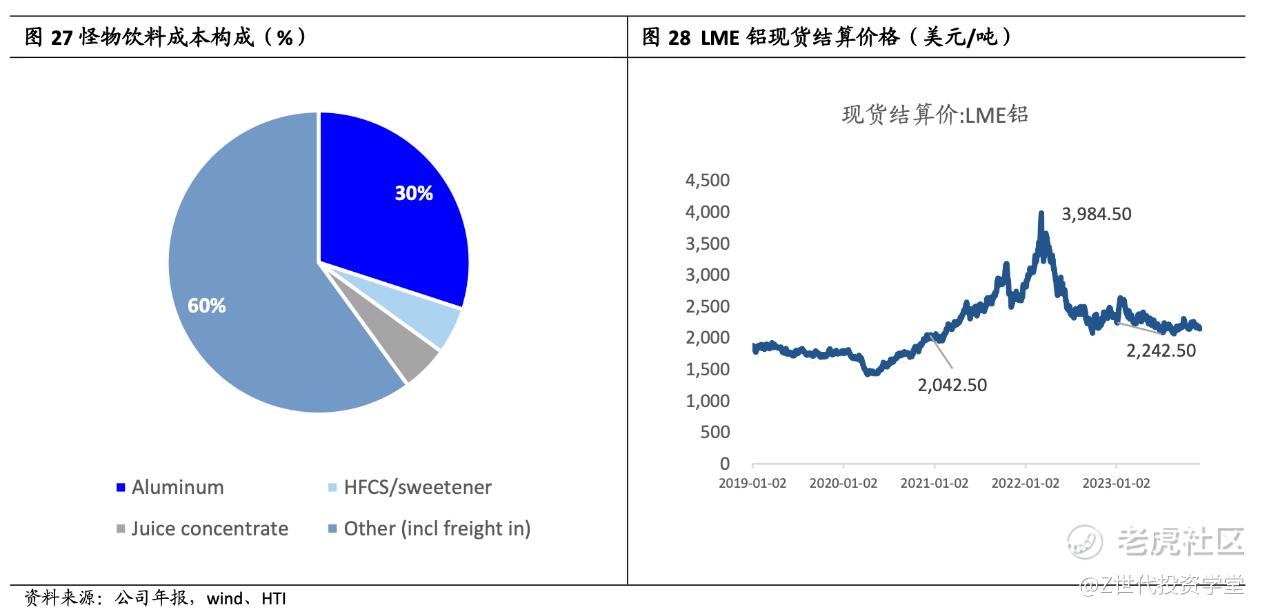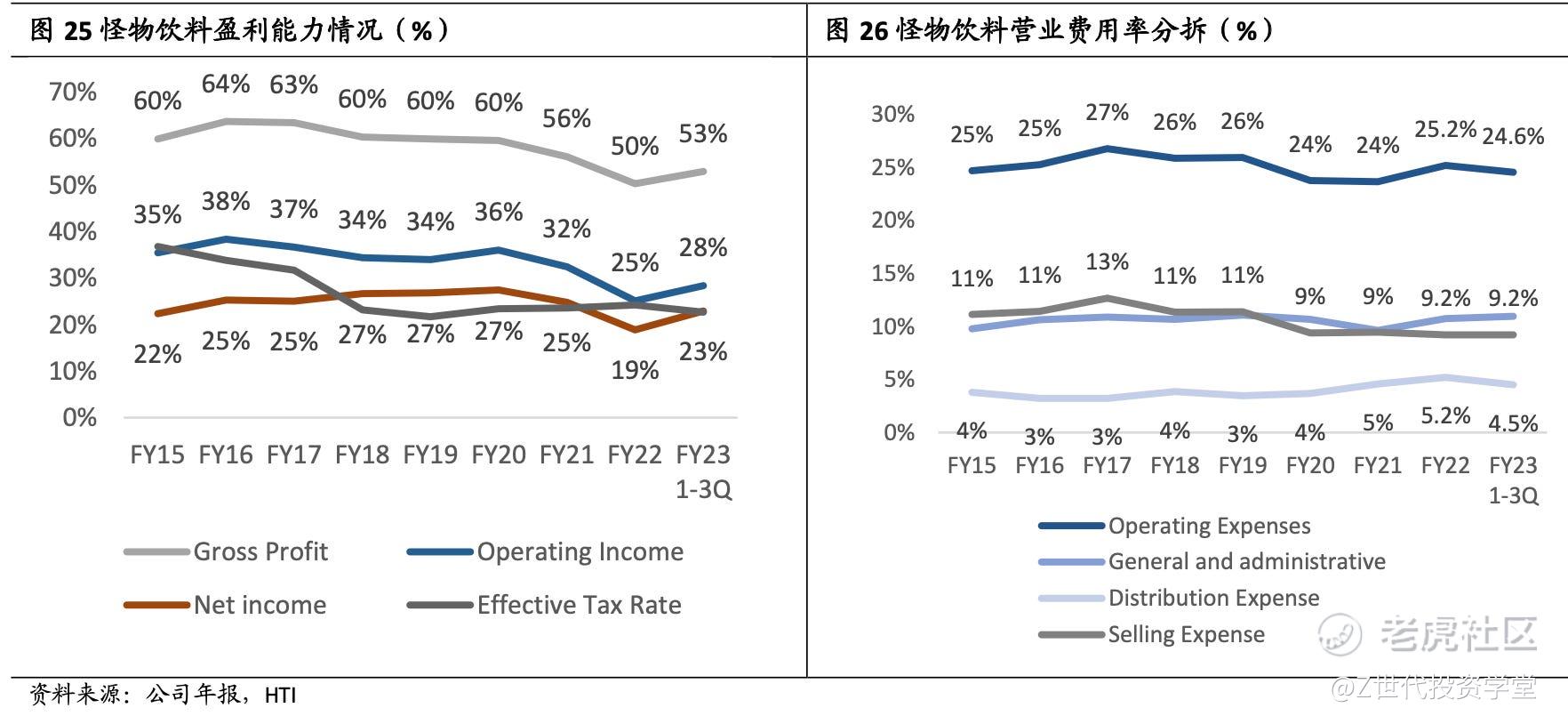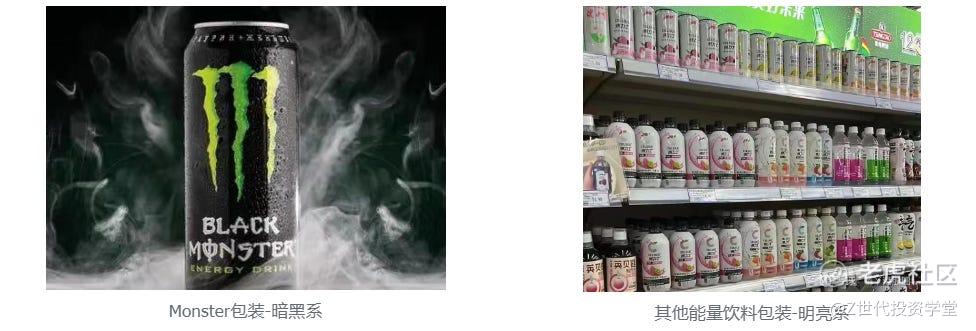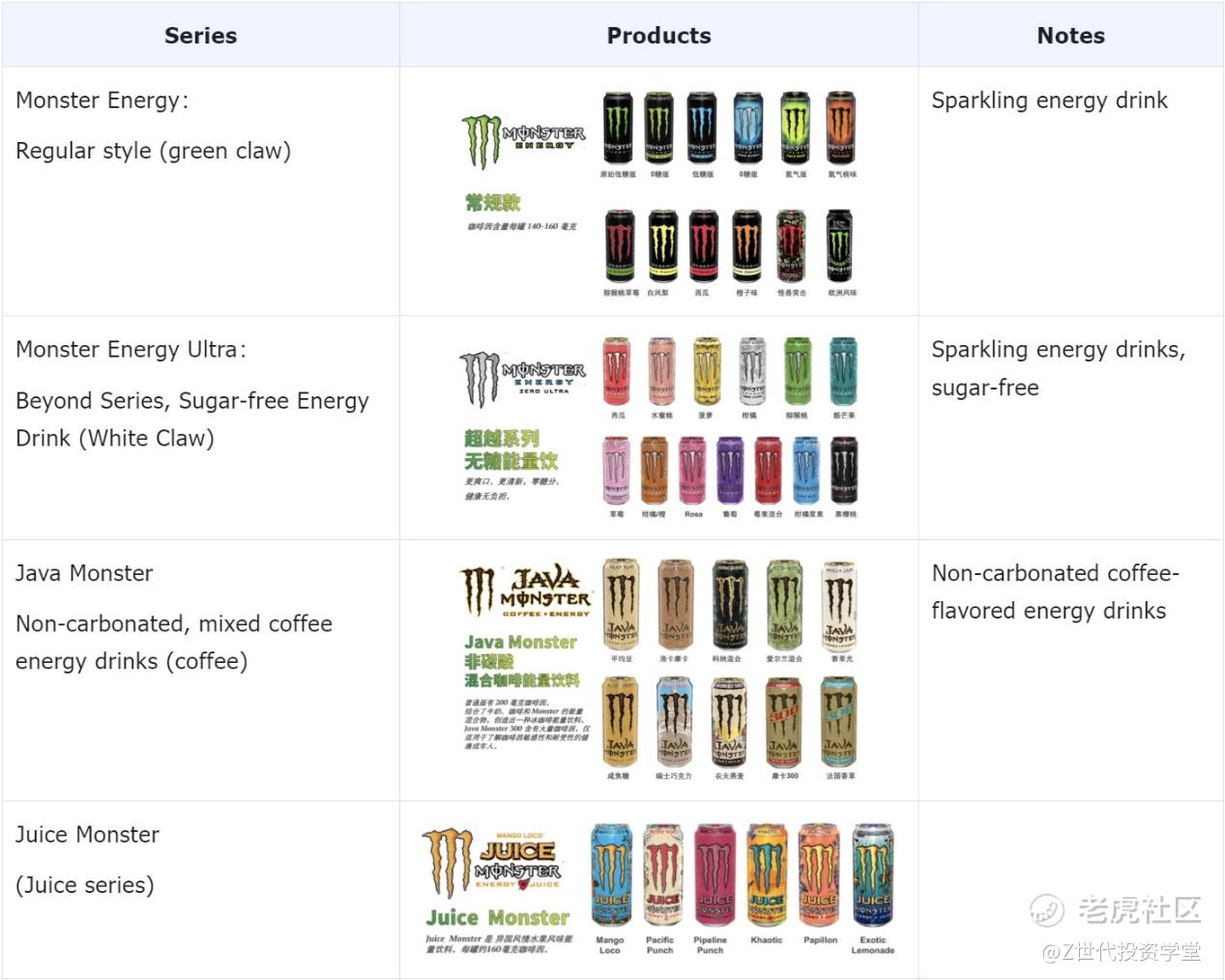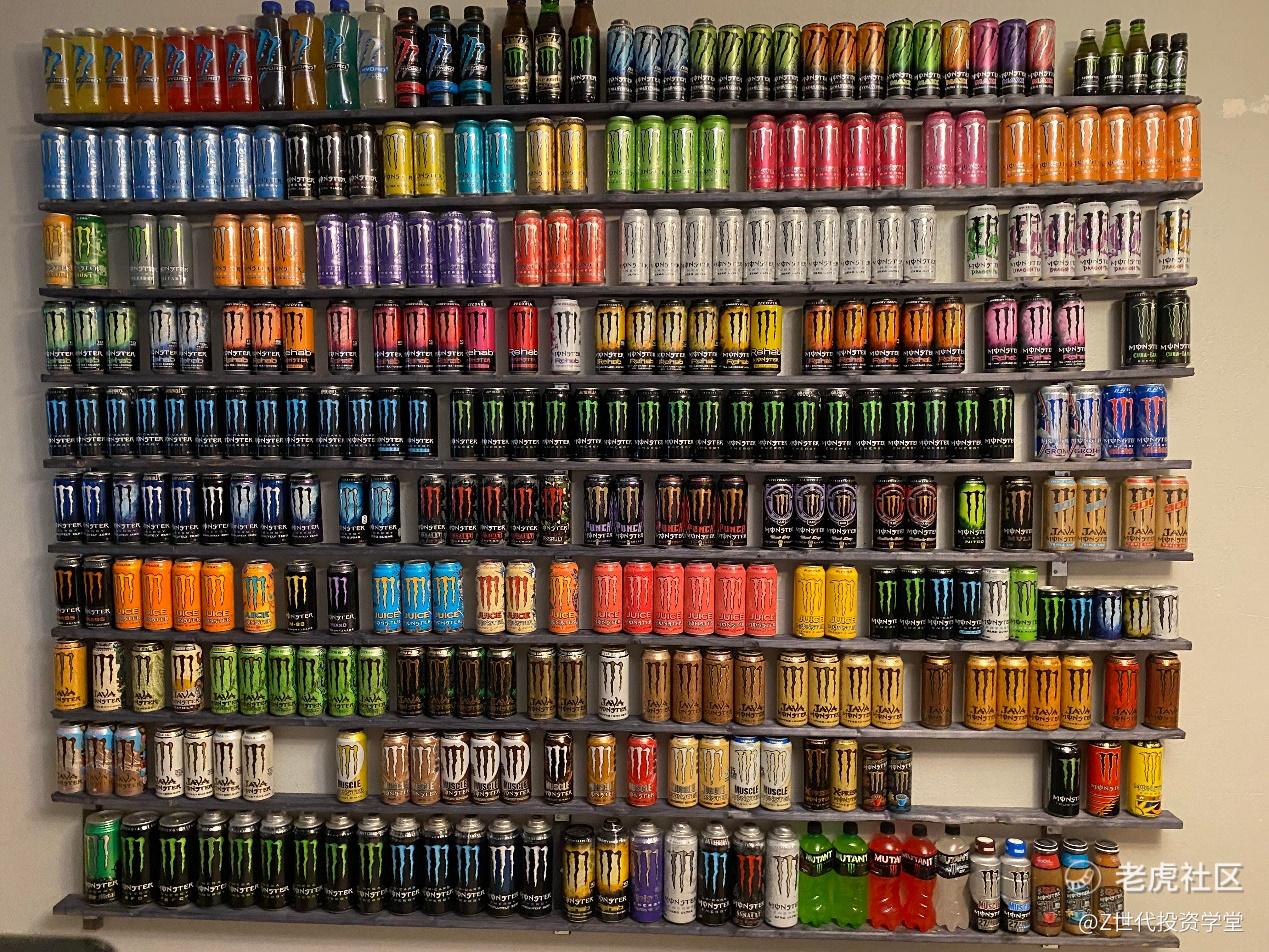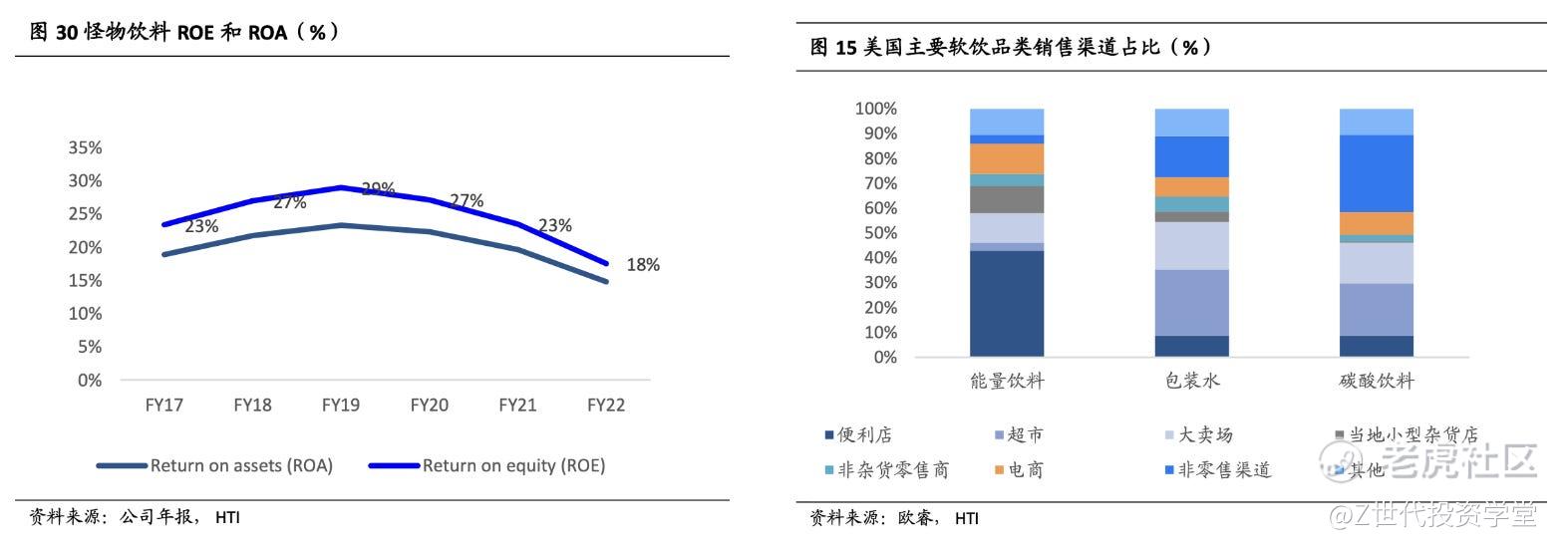Initial Report(part2): Monster Beverage (NASDAQ:MNST), 52% 5-Year Potential Upside (VIP, Olivia ZHANG)
2) Gross profit margin, growth rate
-- Divided by regional income --
-
US market: Due to strong consumption power and high product pricing, the gross profit margin has been stable at about 68% for a long time.
-
International Market: In contrast, the average product pricing in the international market is lower, and the gross profit margin is only maintained in the range of more than 40%. From 2015 to 2020, especially in major markets such as Europe and South America, the gross profit margin has declined year by year, mainly because the overseas market is still in the growth stage, and the company has to increase some promotional subsidies to develop the market.
-
Overall: Overall, the company's gross profit margin remains between 50% -60%. From 2021 to 2022, the company's gross profit margin rapidly declined, from 56.1% to 50.3%, mainly due to the rapid increase in costs. However, since September 2022, the company has raised prices for specific products in different regions, and the profitability in 2023 has begun to stabilize and rebound, with a year-on-year increase of 19.5% in gross profit.
3) Cost structure - raw material dependence on imports
Monster only purchases raw materials (aluminum cans, juice, sugar, additives, etc.) and transports them to third-party bottlers and packers for the production, bottling, and packaging of finished products.
4) Operating expenses
In terms of management expenses, the company has remained relatively stable, usually fluctuating between 10% and 11%. However, sales expenses have shown a downward trend. In 2020, due to the impact of Covid-19, advertising activities were significantly reduced, and sales expenses dropped to 9%, which is 2pct lower than the historical average of 11%. As for transportation costs, from 2021 to 2022, due to global supply chain issues and inflation, the company faced challenges such as container shortages and port congestion, and had to turn to expensive air transportation methods, resulting in a significant increase in distribution costs.
5. Investment Thesis:
3.1 Brand (why Monsters can always exist))
1)Product competitive advantage-counter positioning. The company launched a 16-ounce product with a price similar to the Red Bull 8.4-ounce product.
Differentiated positioning refers to the company's products avoiding the product positioning of leading companies. For example, Red Bull positions itself in the mid-to-high-end market and has smaller cans, while Monster innovatively chooses the 16-ounce differentiated market to weaken direct competition with Red Bull. With large packaging and low unit prices, it successfully breaks away from competition with Red Bull.
2)Brand Moat: Strongly bound to the extreme sports market (especially with the brand perception of "claws" ), forming an entry barrier and not being affected by small brand energy drinks
It is clear that as a special category in the beverage industry, energy drinks have relatively small barriers in production technology, but the leading companies in the industry rely not only on the taste of the product itself, but also pay more attention to the psychological resonance and value recognition of consumers. Therefore, Monster has thousands of user loyalty, brand stickiness, and high consumption frequency as a competitive barrier.
3)Packaging differentiation:
Logo 'Beast Claw', black + fluorescent green (dark style) appearance is obviously different from other energy drinks
4)Marketing strategies are closely tied to brand positioning and extreme sports
Monster excels in understanding and meeting the demands of its target consumers, employing a unique marketing strategy to avoid the high costs associated with mainstream advertising. Monster opts to sponsor some of the coolest events, focusing on thrilling activities like extreme off-road motorcycle races, freestyle motocross, Formula One racing, UFC mixed martial arts, skydiving, rock concerts, skateboarding, snowboarding, bull riding, and NASCAR, rather than traditional TV or magazine ads. This approach resonates with Monster's young, blue-collar demographic. By engaging in niche cultures and aligning with the rugged American spirit of toughness and resilience, Monster has cultivated a highly loyal fan base directly targeting its core consumers— the millennial generation in America, perfectly fitting into this fast-paced and adrenaline-fueled world.
5.2 Innovation and functional dependence have improved Re-purchase Rate and penetrated a wider range of customer groups, providing product services for more diverse customer needs
Each series has functional changes.
Monster Energy Drinks
Monster also reduces the threat of potential differentiated entrants by increasing new capacity to occupy shelf space and meet the needs of different usage scenarios in distribution channels.
Monster diversified its beverage flavors to break the monotony in the energy drink market compared to Red Bull. By introducing 1 to 4 new flavors annually, Monster aimed to cater to diverse consumer demands. Despite Red Bull's dominance in the U.S. market, its limited product range provided Monster with an opportunity to innovate. Monster followed three main principles in new product development: launching healthier options like low-sugar and zero-calorie series, adopting the "energy drink + X" model where X could be juice, coffee, ready-to-drink tea, or protein, to differentiate from existing products and minimize market share erosion. These strategies helped Monster achieve a leading position in the U.S. market.
Moreover, Monster's new product introductions drove revenue growth significantly. Nielsen data indicated that from 2010 to 2013, Monster's sales increased by 79%, with 72% of that growth attributed to products launched after 2010, such as zero-calorie options, ready-to-drink tea, and high-protein variants. This underscores the importance of ongoing innovation in enhancing customer retention and fostering growth.
5.3 Distribution channels: Light asset layout, often cooperate with local large beverage distributors in different markets to optimize their distribution network and market penetration rate. Leverage the distribution channels of giants to achieve rapid stocking.
The company has adopted a light asset model of outsourcing production and cooperative distribution, allowing it to focus more on marketing, branding, thereby promoting international expansion. In terms of distribution, the company adopts different partners in different regions: in Japan, Asahi Beer serves as a cooperative distributor; in the US and other regions, it relies on Coca-Cola as the main cooperative distributor.
Although Coca-Cola's sales channels are mainly concentrated in convenience stores, vending machines, Costco, and Sam's Club, there are still differences in the matching of sales channels. Therefore, Monster is also expanding potential sales channels such as gas stations, cinemas, nightclubs, car 4S stores, and industrial and mining enterprises, which are areas that Coca-Cola has less coverage in.
Monster's customer base is mainly Coca-Cola bottlers. This light asset operation model has enabled the company to maintain a high ROE. In 2022, 48% of Monster's sales came from US bottlers, 39% from international bottlers, and only 13% were directly retailed through channels such as e-commerce, club stores, and convenience stores.
Specific customers include:
Europe : Coca-Cola European Partnership (CCEP.US, 13% of revenue),
US : Coca-Cola bottling company (COKE.US, revenue accounted for 11%), Reyes Coca-Cola bottling plant (RCCB, revenue accounted for 9%) and other Coca-Cola bottling plants.
China : Monster's bottlers are Swire Coca-Cola and COFCO Coca-Cola.
5.4 The acquisition of fragrance suppliers guarantees taste exclusivity
Although the company also imports flavorings from other suppliers, acquiring AFF is crucial for protecting and innovating the core flavors of Monster beverages and for standardizing global taste profiles. The company has consistently used product innovation as a key strategy to compete with Red Bull, placing significant emphasis on the market rollout of new products.
This diversification allows Monster to continually expand the types of customer segments it serves and adapt its R&D to market trends and changing consumer preferences, providing greater flexibility.
5.5 Other brand unit prices are at a high level, Monster is more cost-effective.
The overall pricing of top energy drink brands is relatively high. Red Bull targets labor and working people, and its average market price in 2023 is 1.9 times that of Monster. Although Monster's single can price is close to Red Bull, it maintains a high cost performance by increasing packaging capacity, surpassing Red Bull in sales volume, competing with it in sales, and quickly seizing the market.
Assuming Monster 1 unit price is 1 dollar:
*Do note that all of this is for information only and should not be taken as investment advice. If you should choose to invest in any of the stocks, you do so at your own risk.
Disclaimer: Investing carries risk. This is not financial advice. The above content should not be regarded as an offer, recommendation, or solicitation on acquiring or disposing of any financial products, any associated discussions, comments, or posts by author or other users should not be considered as such either. It is solely for general information purpose only, which does not consider your own investment objectives, financial situations or needs. TTM assumes no responsibility or warranty for the accuracy and completeness of the information, investors should do their own research and may seek professional advice before investing.



